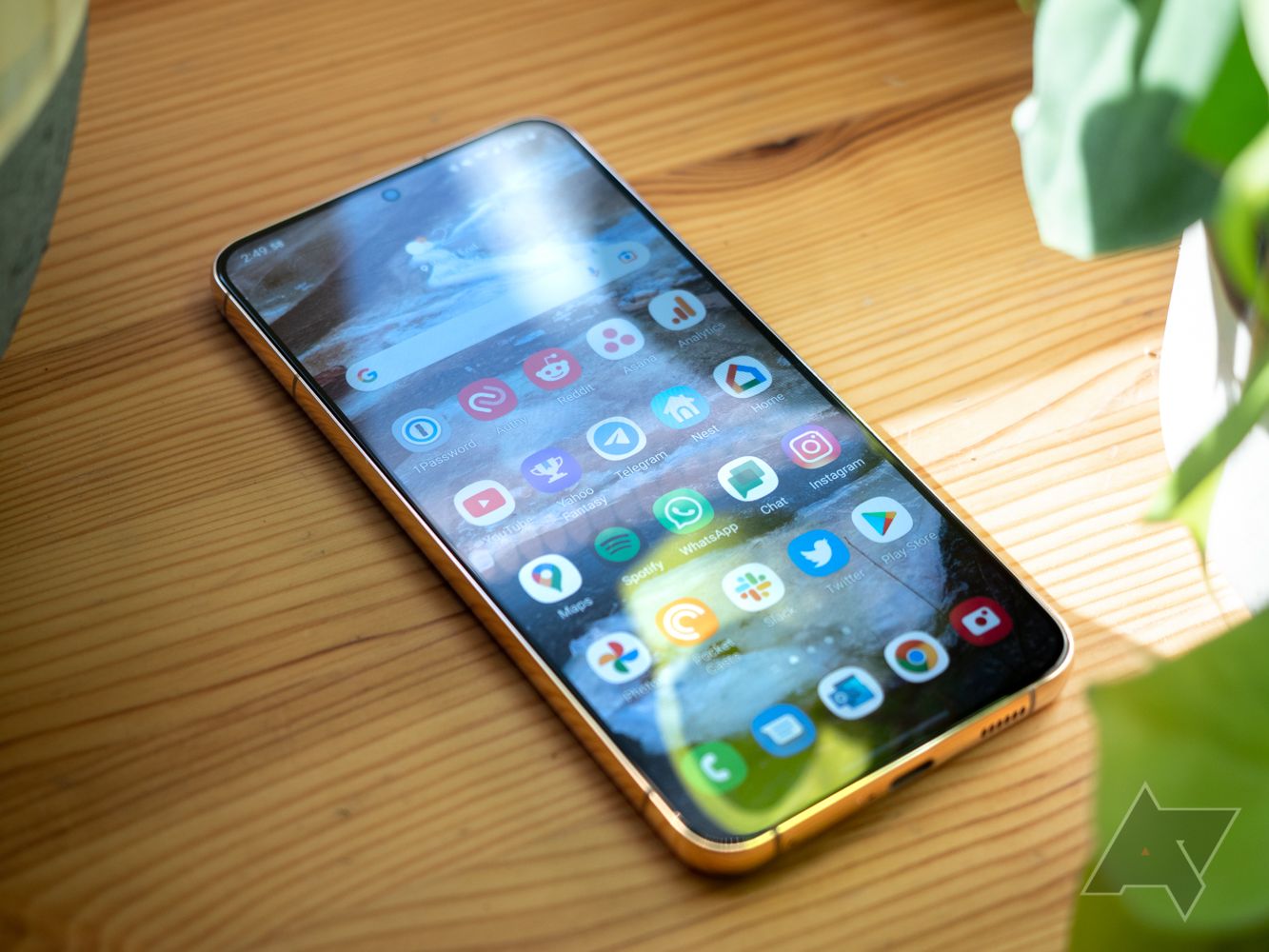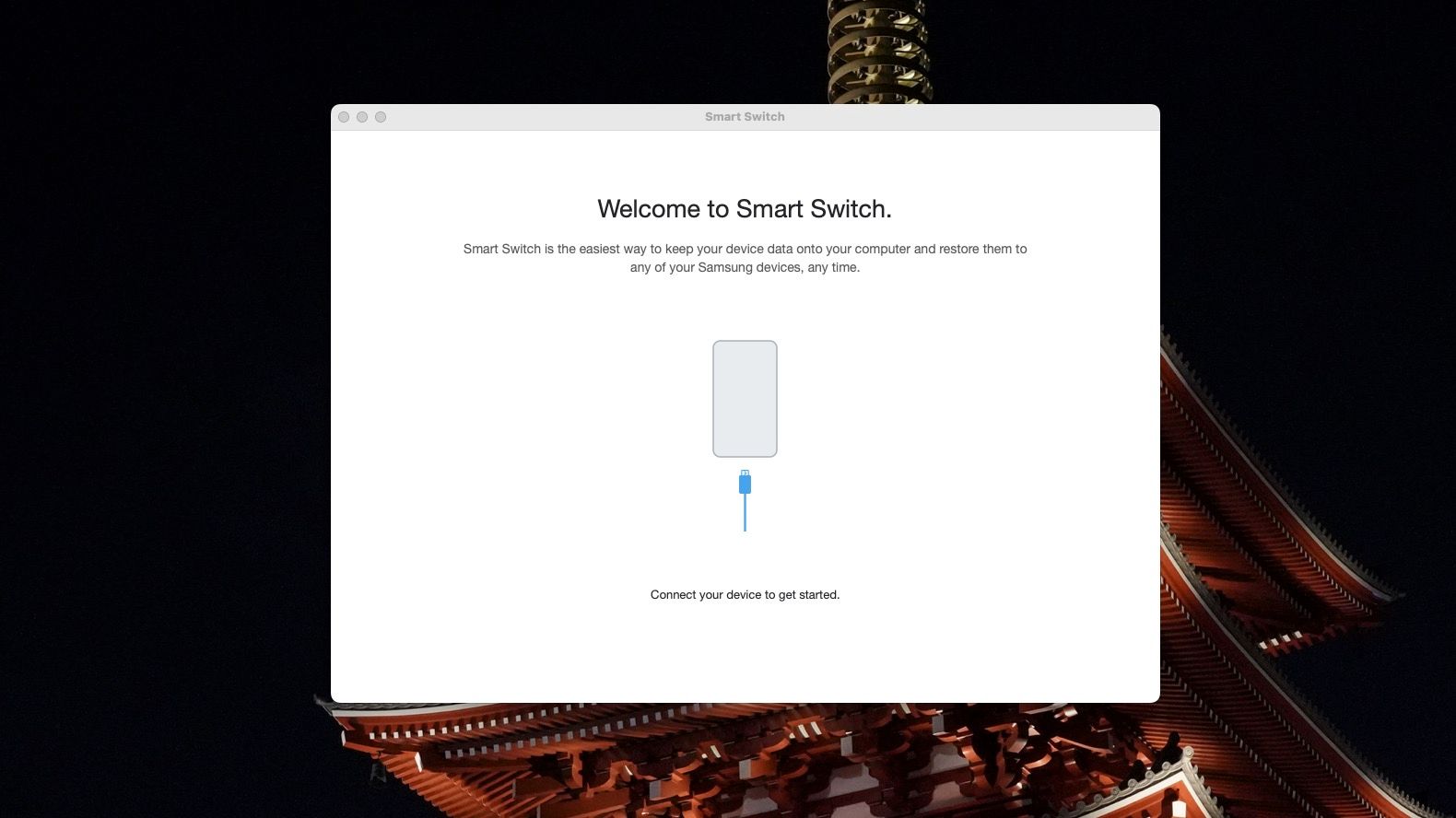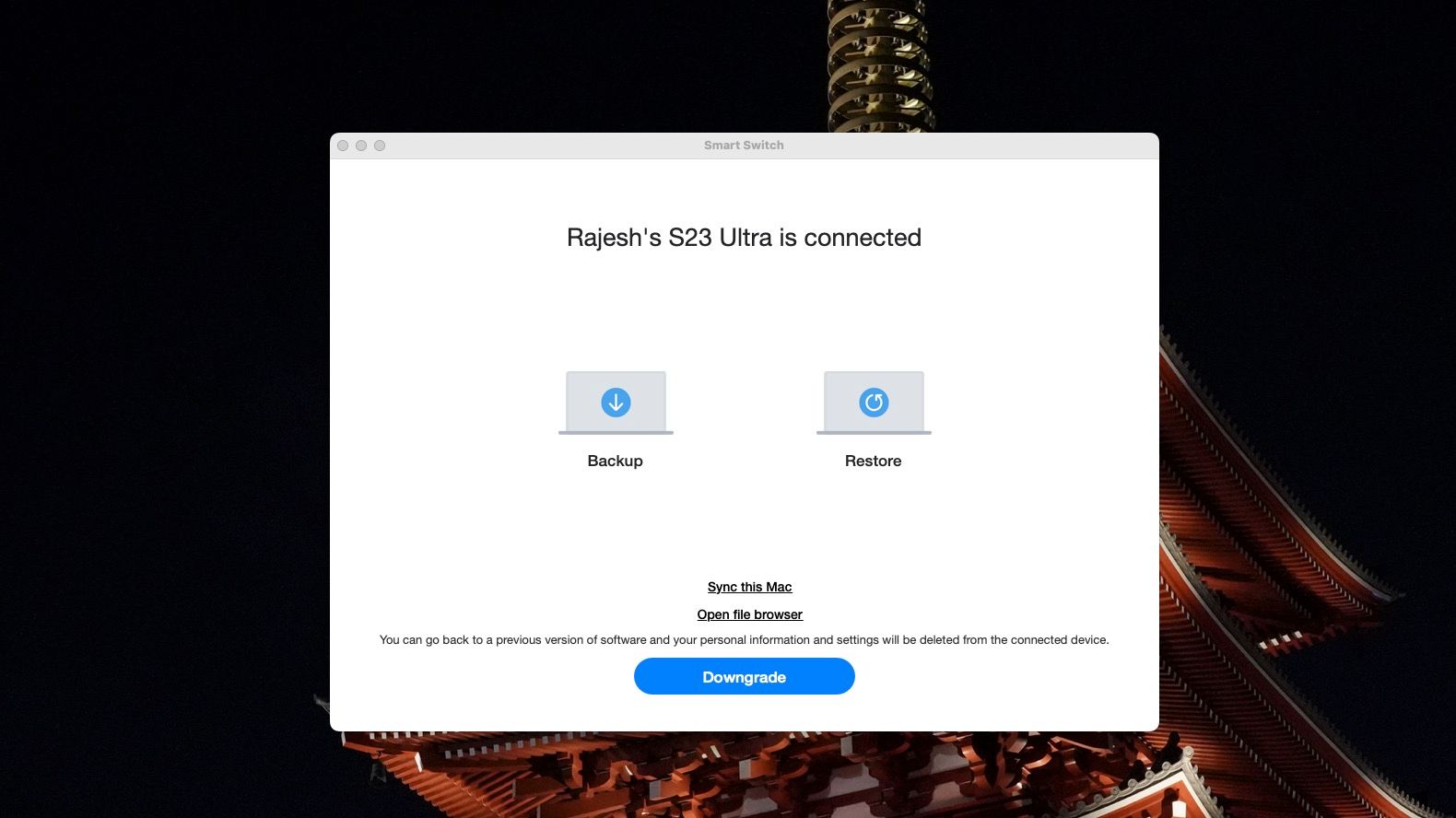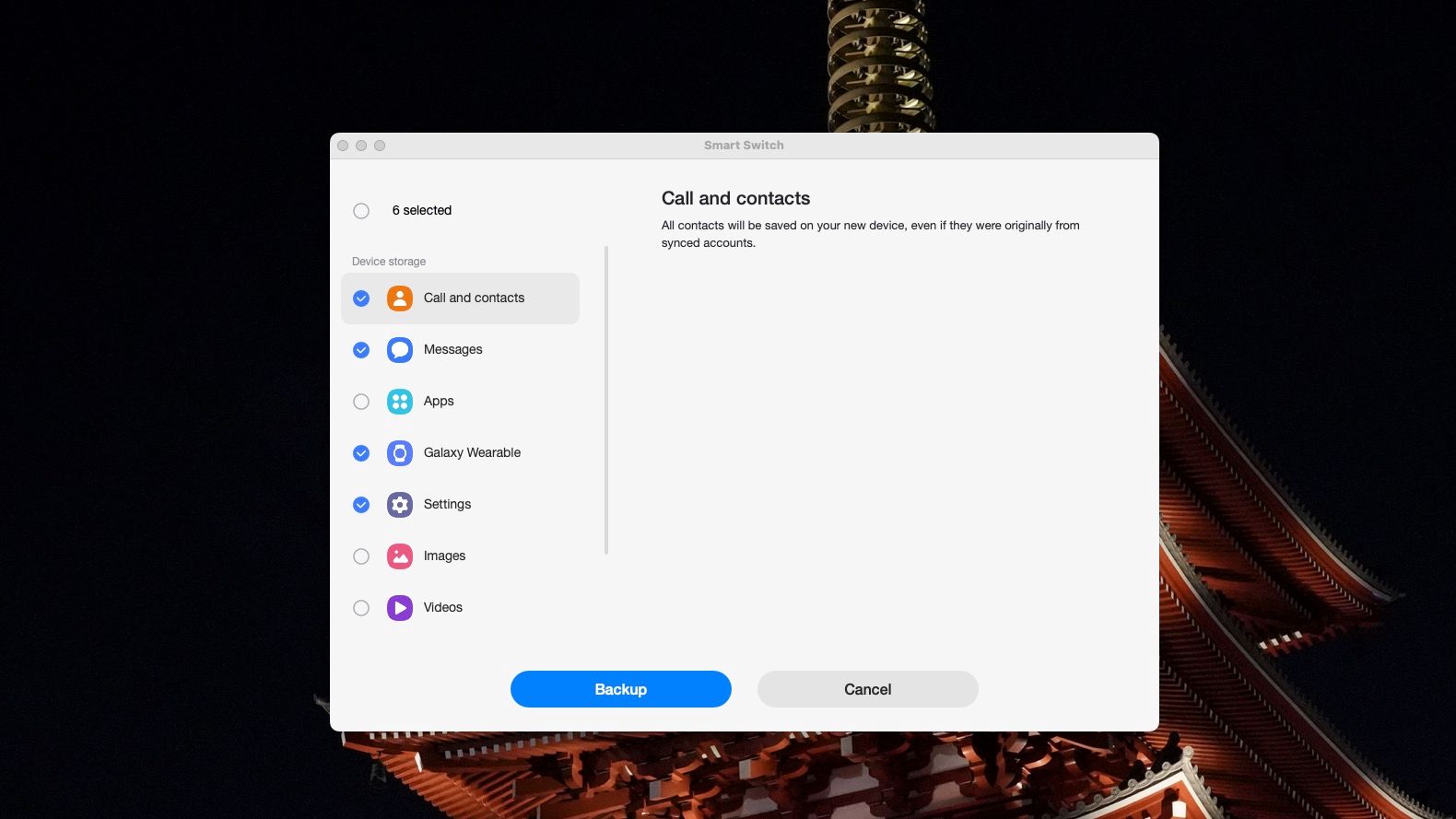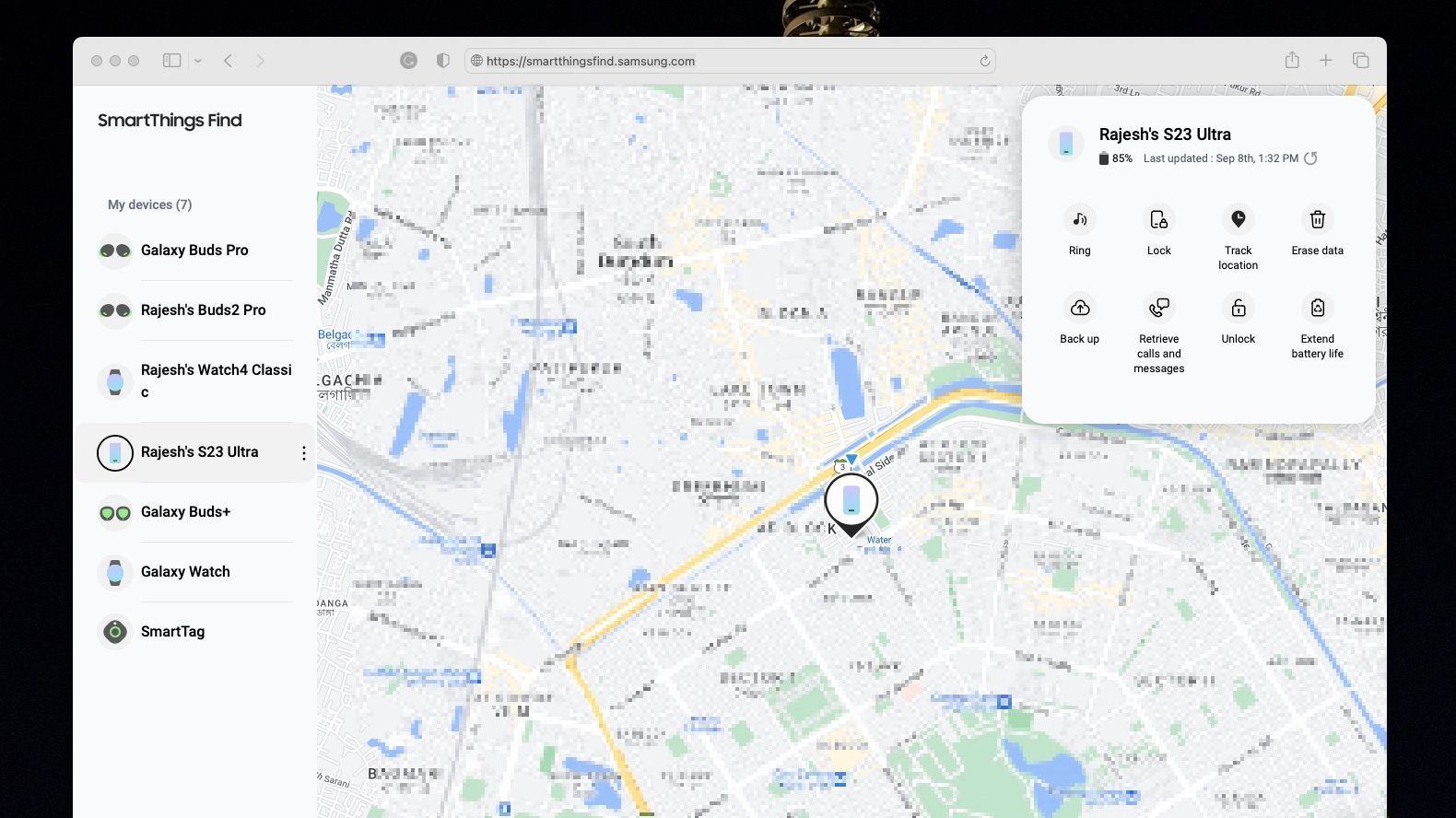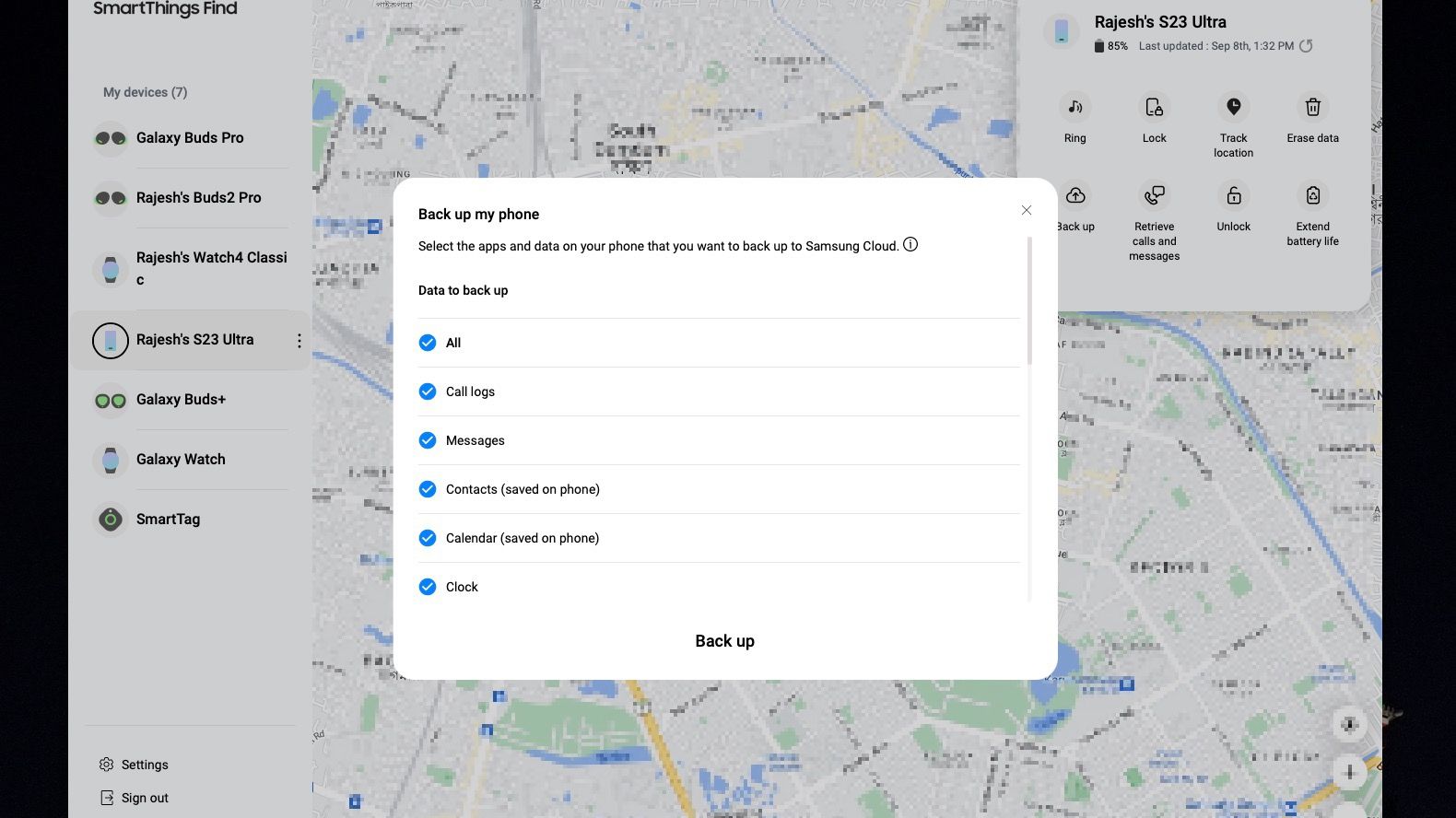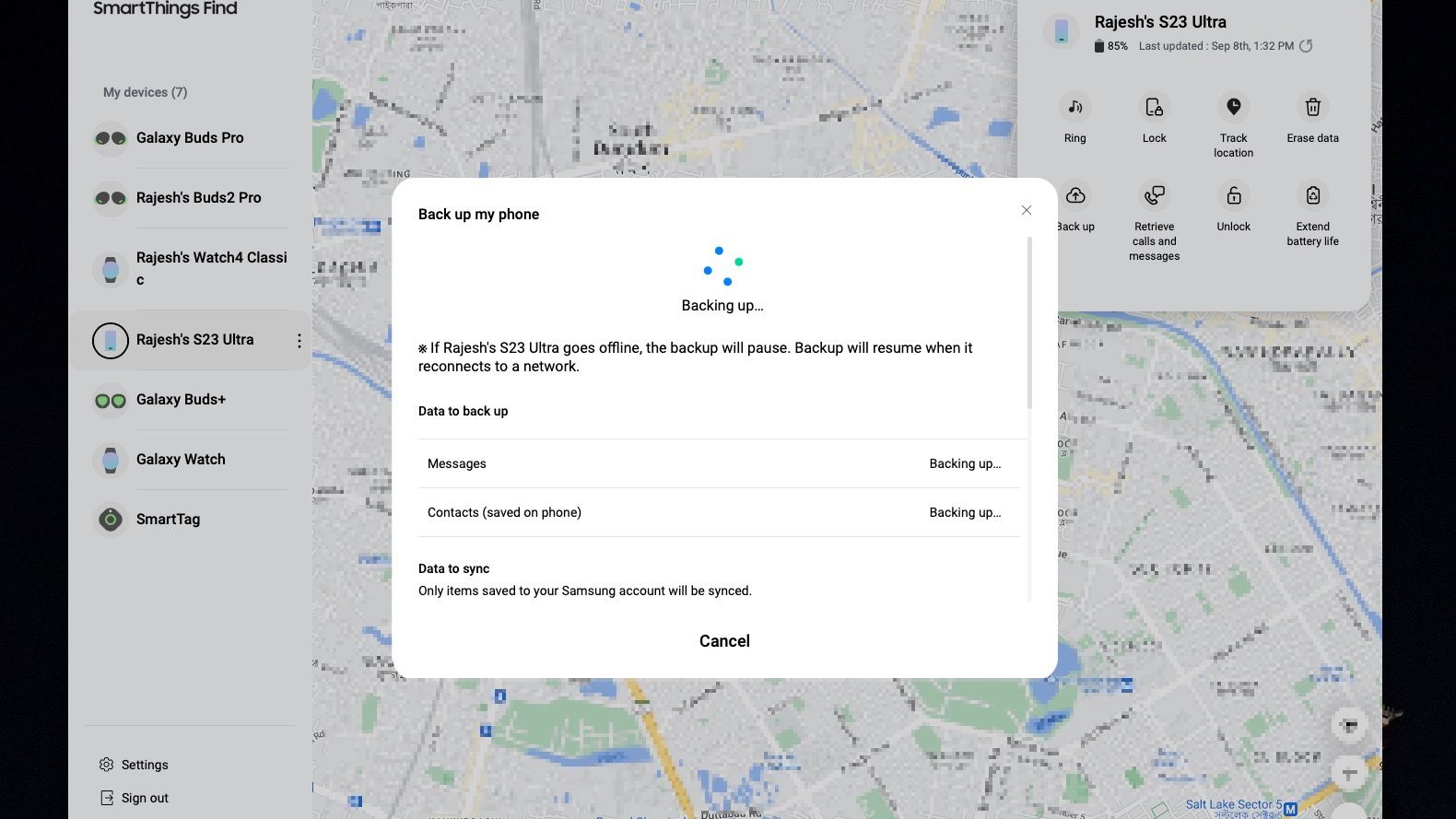Before you switch from your current Samsung Galaxy phone to one of Samsung's Galaxy flagships, it's important to back up your data. This makes your transition to the new device easier, as you won't spend time getting your contacts, messages, apps, and settings the way you like. Plus, you should always back up your Samsung phone before things go wrong, it suddenly stops working, or it's stolen.
Samsung offers several ways to create a full device backup of your Galaxy phone or tablet. You can either back up your data to the cloud or create a local backup on your PC. Alternatively, you can use Google Drive to back up important data on your Galaxy phone. Follow this guide to learn more.
What is Samsung Cloud?
If you have a Samsung account, using Samsung Cloud to back up the data and settings on your Galaxy phone is the best solution. It allows you to back up (and restore) your device settings to a new Galaxy phone with a few taps.
Below is the content that Samsung Cloud can back up:
- Paired Bluetooth devices
- Alarms
- Call logs
- Messages
- Samsung Keyboard settings
- Homescreen layout and wallpaper
- Always On Display settings
- Wi-Fi settings
- Voice recorder
- Locally saved contacts and calendar entries in Samsung Contacts and Calendar apps
- Device settings like accessibility settings
There are some downsides to using Samsung Cloud:
- Locally stored documents and photos are not backed up to Samsung Cloud.
- Data from non-Samsung apps is not backed up, which could be a bummer for many.
- Samsung Cloud is only useful if switching from one Galaxy device to another. The cloud service is not available on non-Samsung phones, limiting its usefulness.
While Samsung Cloud backs up your contacts, calendar, and messaging data, it only backs up items saved locally. So, contacts or calendar entries synced from your Google account are not backed up.
Samsung Cloud cannot back up files larger than 1GB, though you will unlikely reach this limit soon. All backed-up data is encrypted for security and privacy reasons.
Samsung Cloud does not back up data from Samsung Secure Folder. So, move any content manually from the folder before resetting the device to ensure the data is not lost.
How to back up your Samsung phone or tablet using Samsung Cloud
When you turn on auto backup for Samsung Cloud, it automatically backs up your phone once every 24 hours when it is on charge, connected to a Wi-Fi network, and the screen is off.
- Open your Galaxy phone's settings.
- Tap Accounts and backup.
- From the Samsung Cloud section, tap Back up Data.
- Select each item you want to back up.
-
Tap Back up now to start the process. You can turn on the Auto back up while roaming option if you wish to.
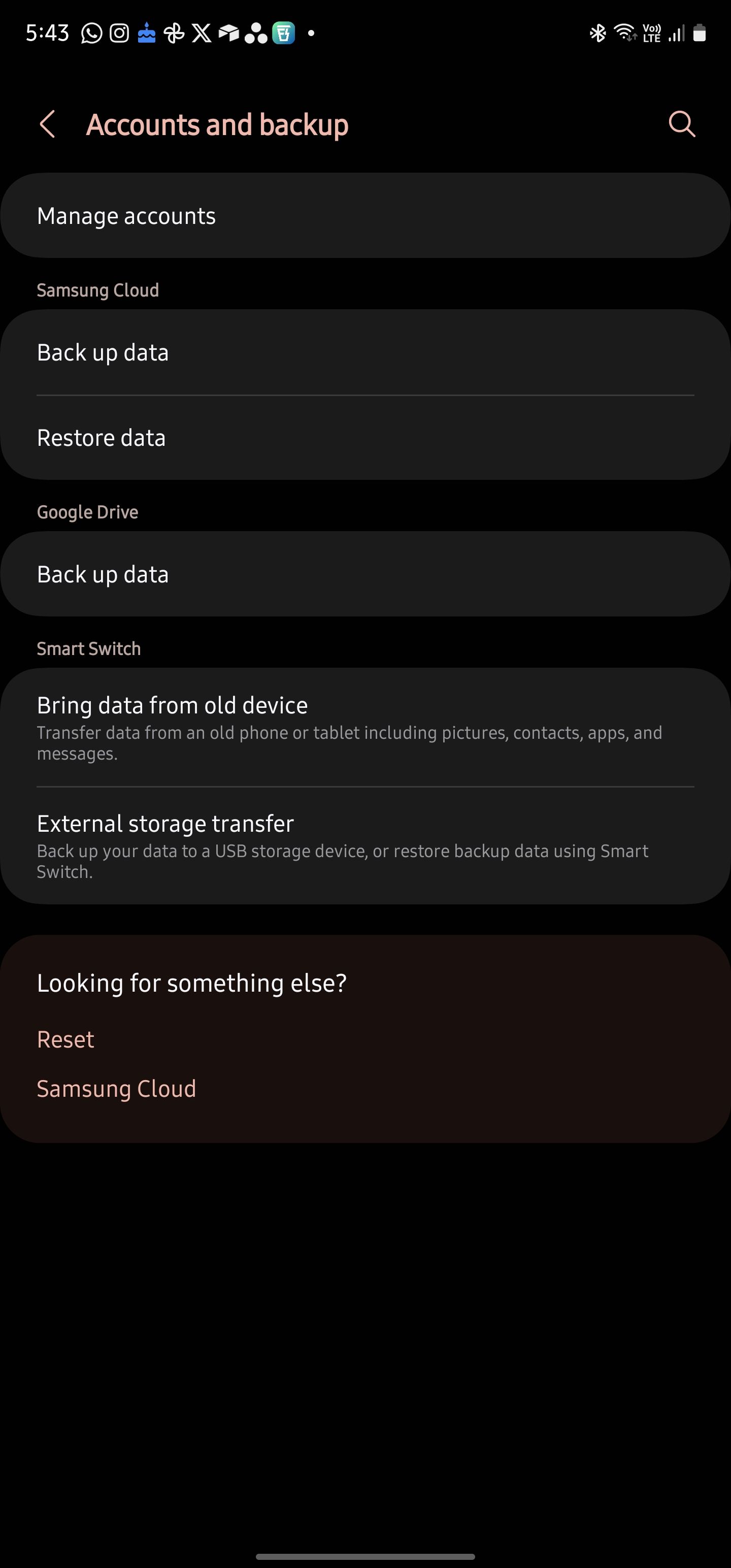
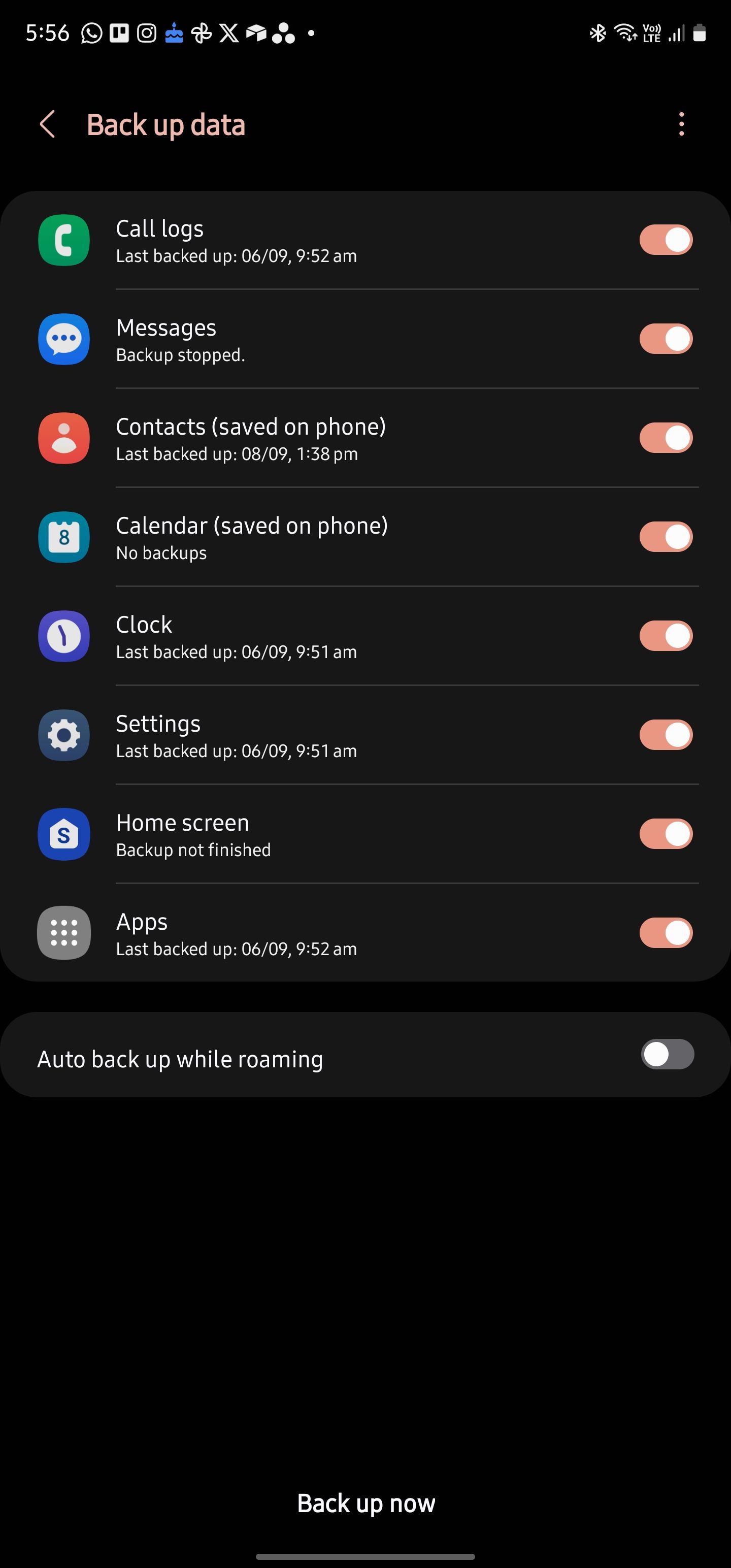
-
Wait until your phone backs up. Tap Done at the bottom of the screen after that.
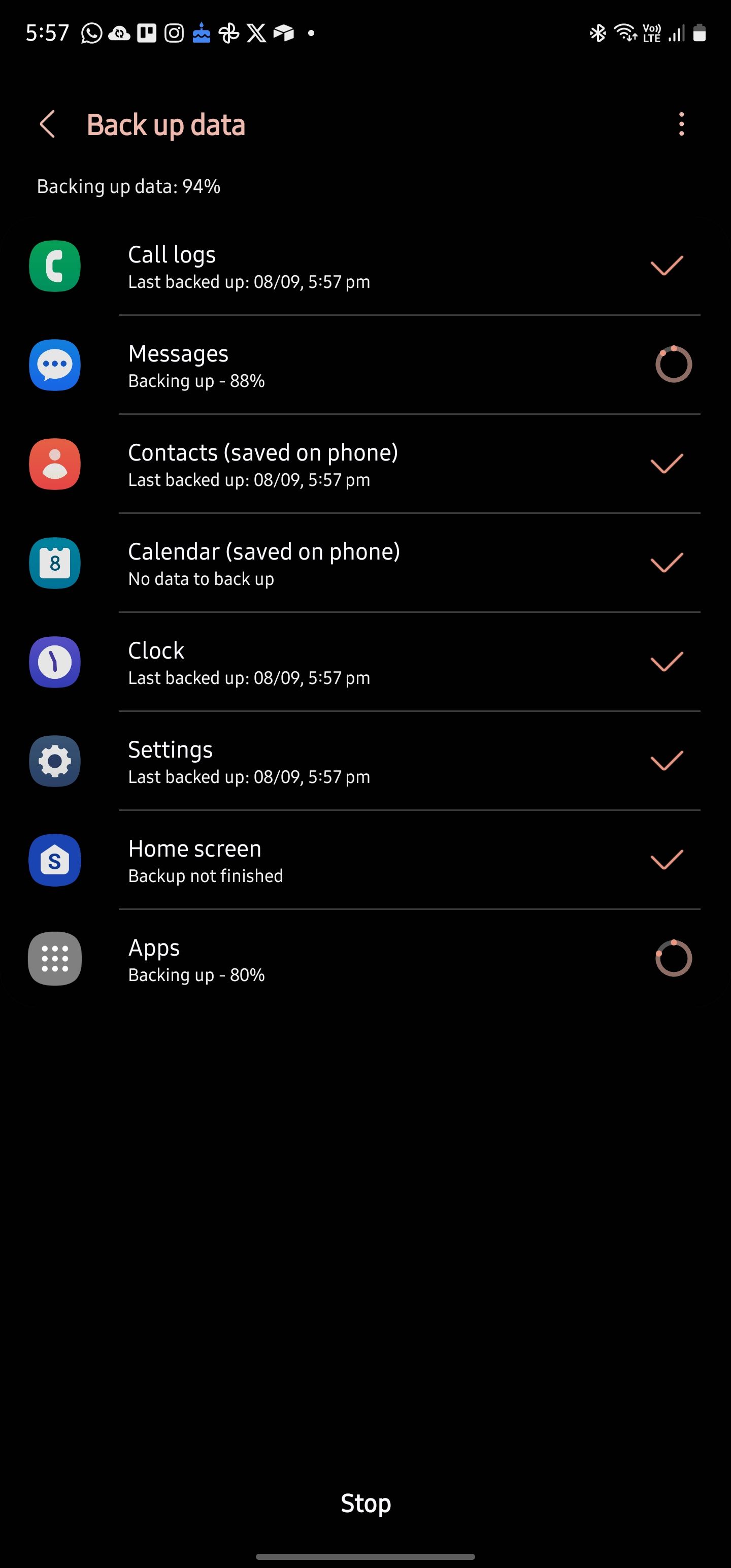
You can see the backed-up data on your PC by logging in to the Samsung Cloud website.
How to restore your Samsung Cloud backup
Restoring a device backup from Samsung Cloud is easy. However, this cloud backup feature is only available on Samsung phones. So, you can't restore data on a non-Samsung device.
- Open your Galaxy phone's Settings menu.
- Tap Accounts and backup.
- In the Samsung Cloud section, tap Restore Data.
- Select the device and the backup you'd like to restore.
- Confirm the data you'd like to bring back on your device.
-
Tap Restore to start the process.
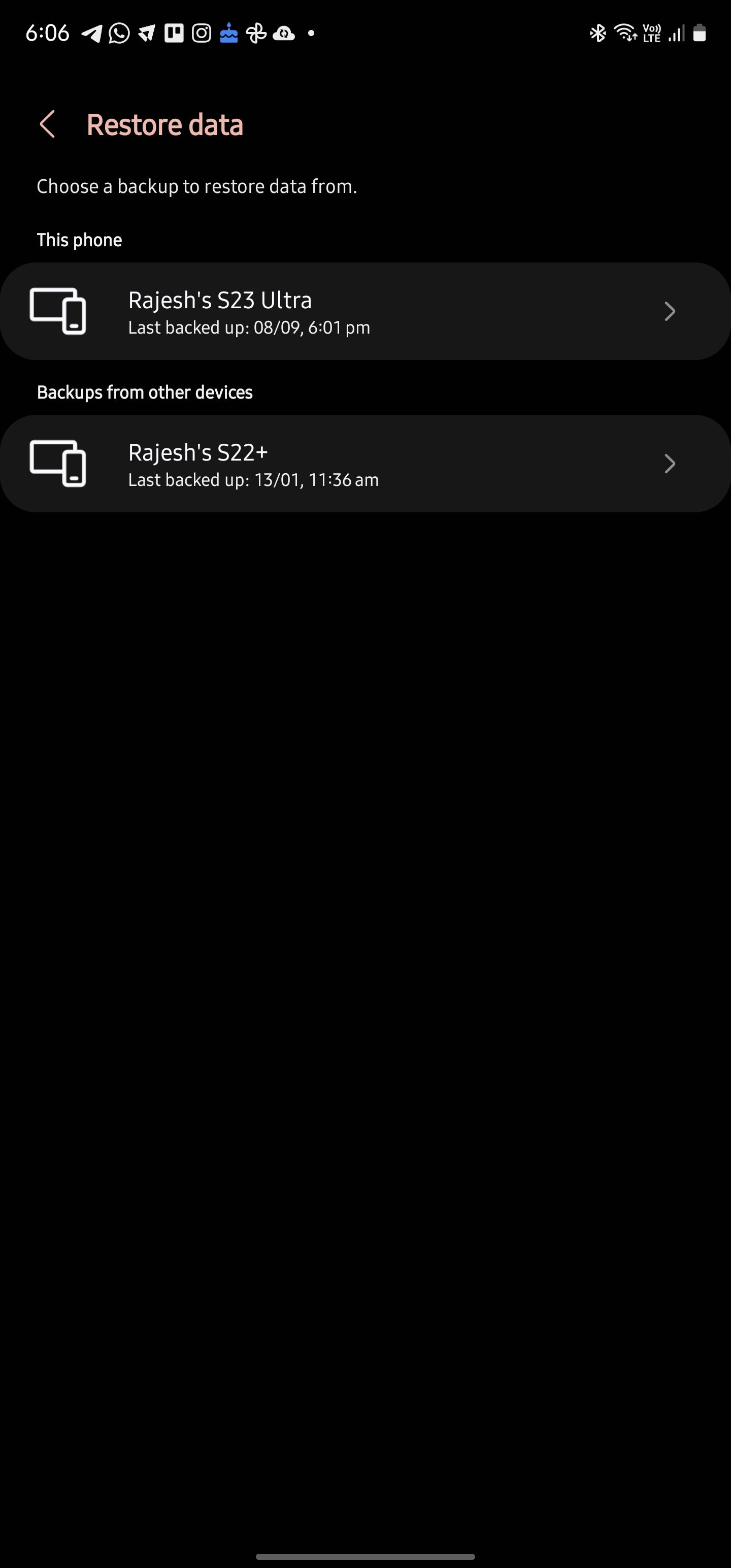
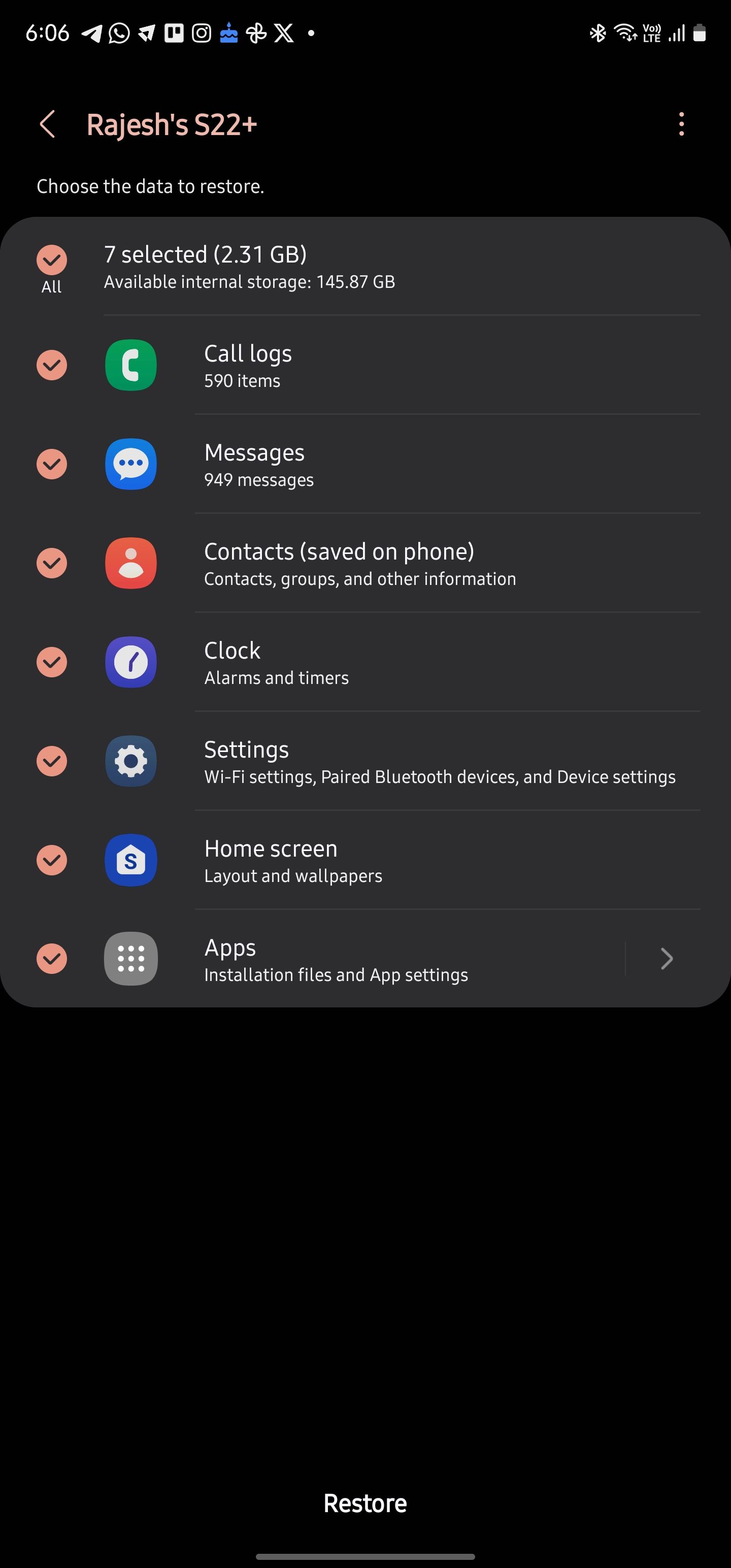
What is Samsung Smart Switch?
Samsung Smart Switch lets you move data and content from your older phone or tablet to your new Galaxy device. The app is available for Android, Windows, and Mac. You'll use the desktop app to create a full local backup of your existing Galaxy phone, which you can restore to your new Samsung phone.
Unlike Samsung Cloud, Smart Switch backs up all locally saved files on your device, including photos, videos, and other documents. It's a more comprehensive backup solution than the former, though you'll need access to a PC. The total backup and restore time might also be higher here, depending on the amount of data involved.
Apart from creating and restoring backups, you can use Smart Switch to install the latest firmware update or restore your Galaxy device to its stock state.
You can use the Smart Switch mobile app to directly transfer data from your current phone to your new Samsung device.
How to back up your Samsung phone or tablet using Smart Switch
Here's how to use Smart Switch to back up your phone:
- Download and install the Smart Switch app from Samsung's website.
- Open Smart Switch and grant it access to the required permissions.
- Download Smart Switch on your Galaxy device. Open and grant the app the requested permissions.
-
With the Smart Switch apps open on your Galaxy phone or tablet and PC, connect the two devices using a USB cable.
- Tap Allow on the Allow access to phone data dialog box that appears on your phone.
-
Smart Switch shows the option to back up or restore the connected phone.
- Click Backup and select the items to back up. This includes your calls, contacts, messages, apps, system settings, and more.
-
Select Backup to start the backup process. Do not close the Smart Switch app on your phone or PC during this process.
If the backup process gets stuck, turn on the Keep screen on option on your Galaxy phone.
How to back up your Samsung device to external storage
One of the best parts of Samsung Smart Switch's mobile app is the ability to directly back up your Galaxy phone or tablet to an external storage or microSD card. This is a great option when you need to back up your phone immediately but don't have access to an internet connection or a PC.
- Insert or connect an external storage drive to your Galaxy phone or tablet using a USB-C to C cable.
- Open the Settings menu on your Galaxy phone.
- Tap Accounts and backup.
- From the Smart Switch section, tap External storage transfer.
-
Select the device you'd like to back up your data on.
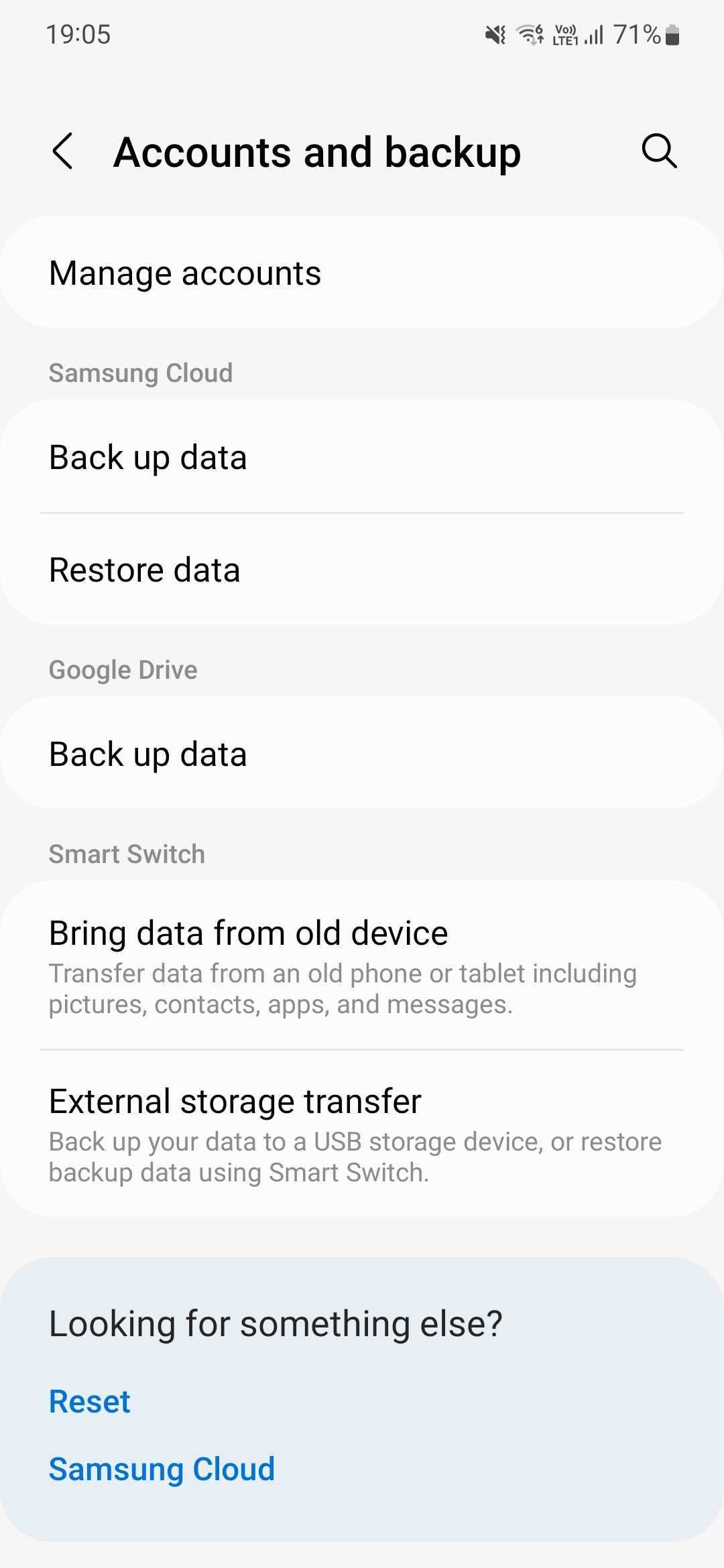
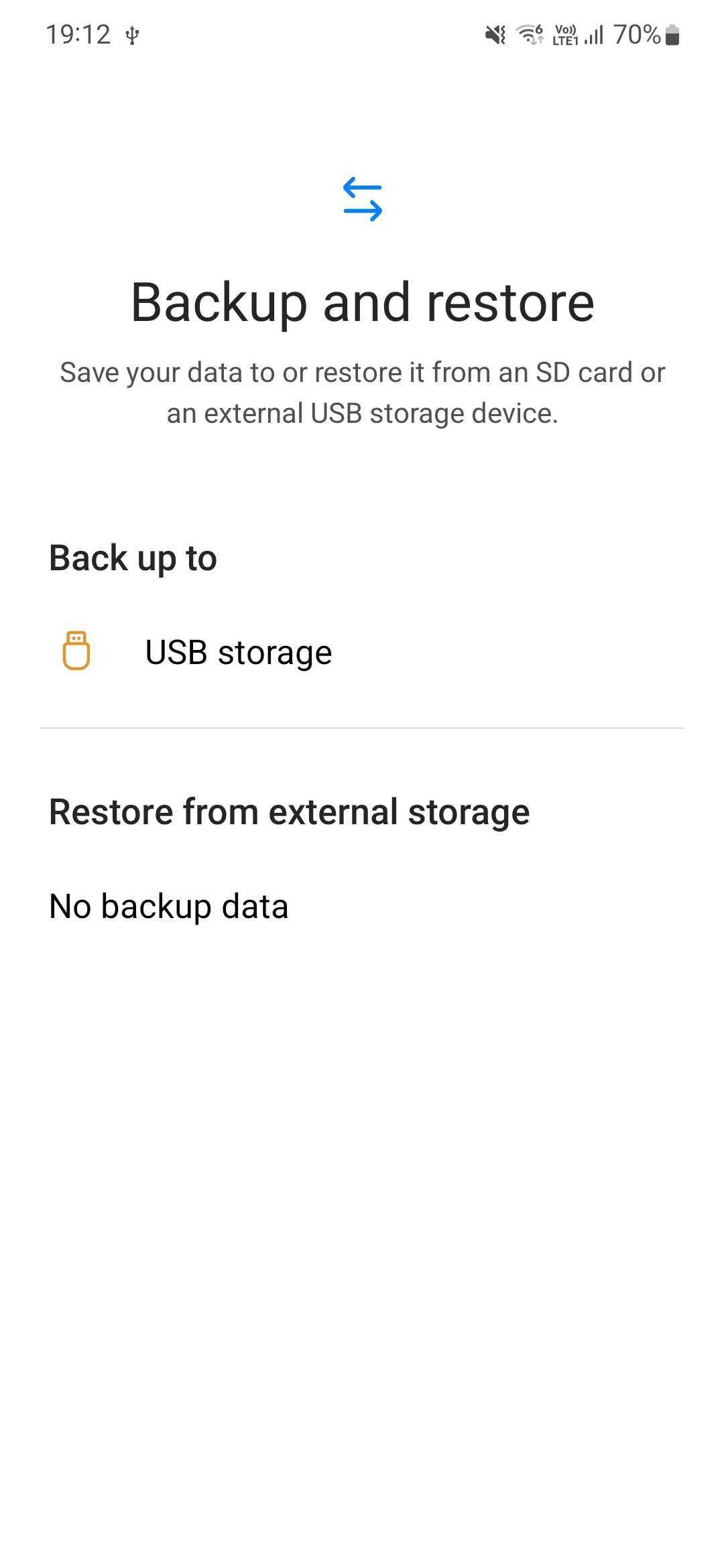
-
Choose the data you'd like to back up and tap Next to start the process.
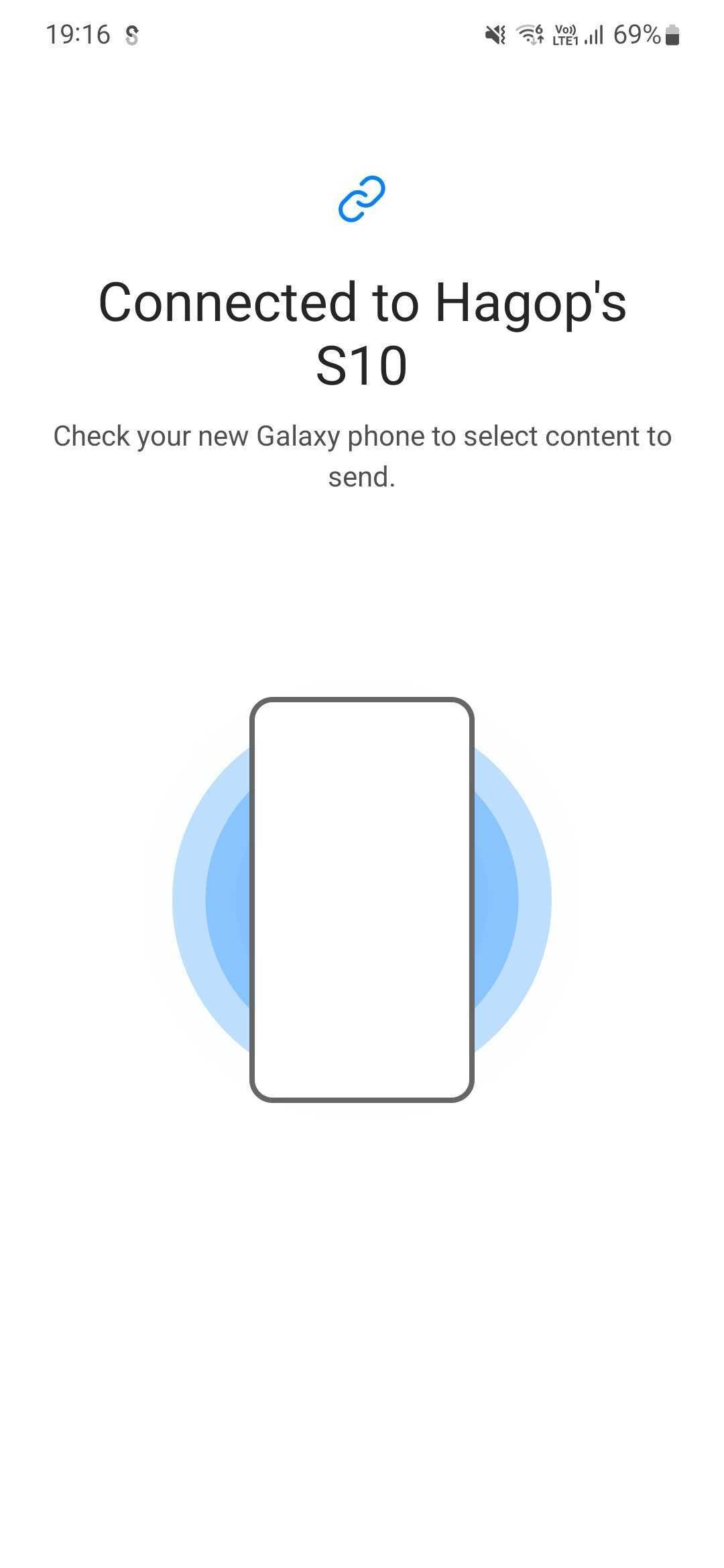
- To restore data from an external storage device, repeat steps 1 through 4 and select the backup you'd like to restore under Restore from external storage.
How to remotely back up your Samsung phone or tablet using SmartThings Find
In addition to initiating a backup process from your handset, Samsung offers the ability to back up your device using a web browser remotely. This method is convenient if you don't have physical access to your device or its screen doesn't work, limiting you from taking a backup.
You must be logged in to a Samsung account to back up your Galaxy device remotely.
As a part of remote backup, you can save your locally saved contacts, calendar entries, call logs, messages, homescreen layout and wallpaper, system settings, and Samsung apps data to Samsung Cloud.
- Go to Samsung's SmartThings Find website on a web browser.
- Sign in with your Samsung Account.
- Give it a few seconds to locate your phone.
-
If you have several devices linked to your Samsung account, choose the one you want to back up from the list on the left side of the screen.
- From the device status box, click Back up.
-
Select the data you'd like to safeguard and select the Back up button.
-
Depending on the size of the data and the internet speed, the backup process can take a few minutes to complete. Once it's over, click Close to dismiss the window.
If your Samsung device isn't connected to the internet, the backup automatically begins the next time the phone is online.
How to back up your Samsung phone to Google Drive
If you don't have a Samsung account or prefer Google, back up your Samsung phone to Google Drive. This is also the method you should use if your next phone is a non-Samsung device.
- Open the Settings menu on your Galaxy phone.
- Tap Accounts and backup.
- In the Google Drive section, tap Back up data.
- If this is your first time using Google Drive as a backup method, tap Turn on.
-
Tap Back up now to start the process.
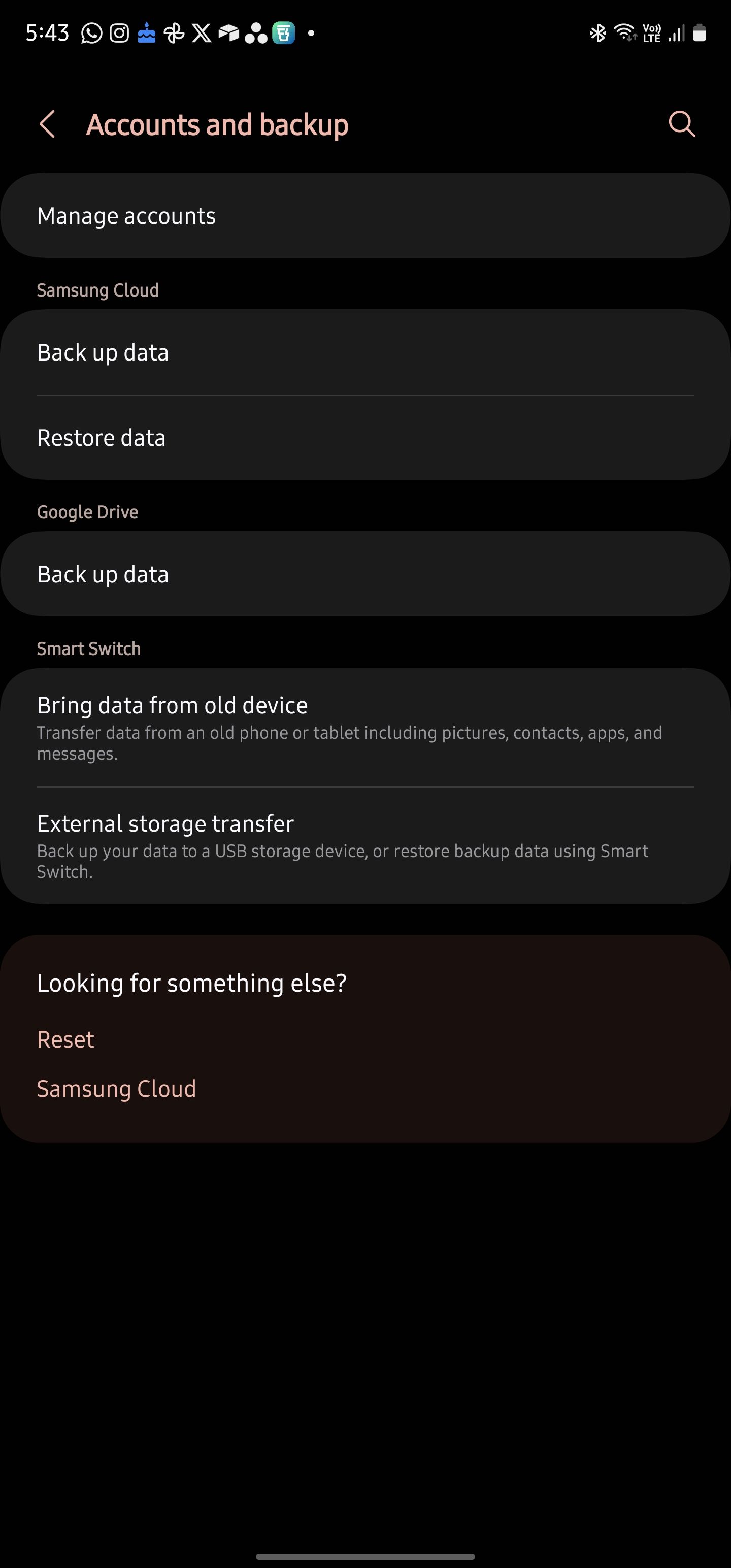
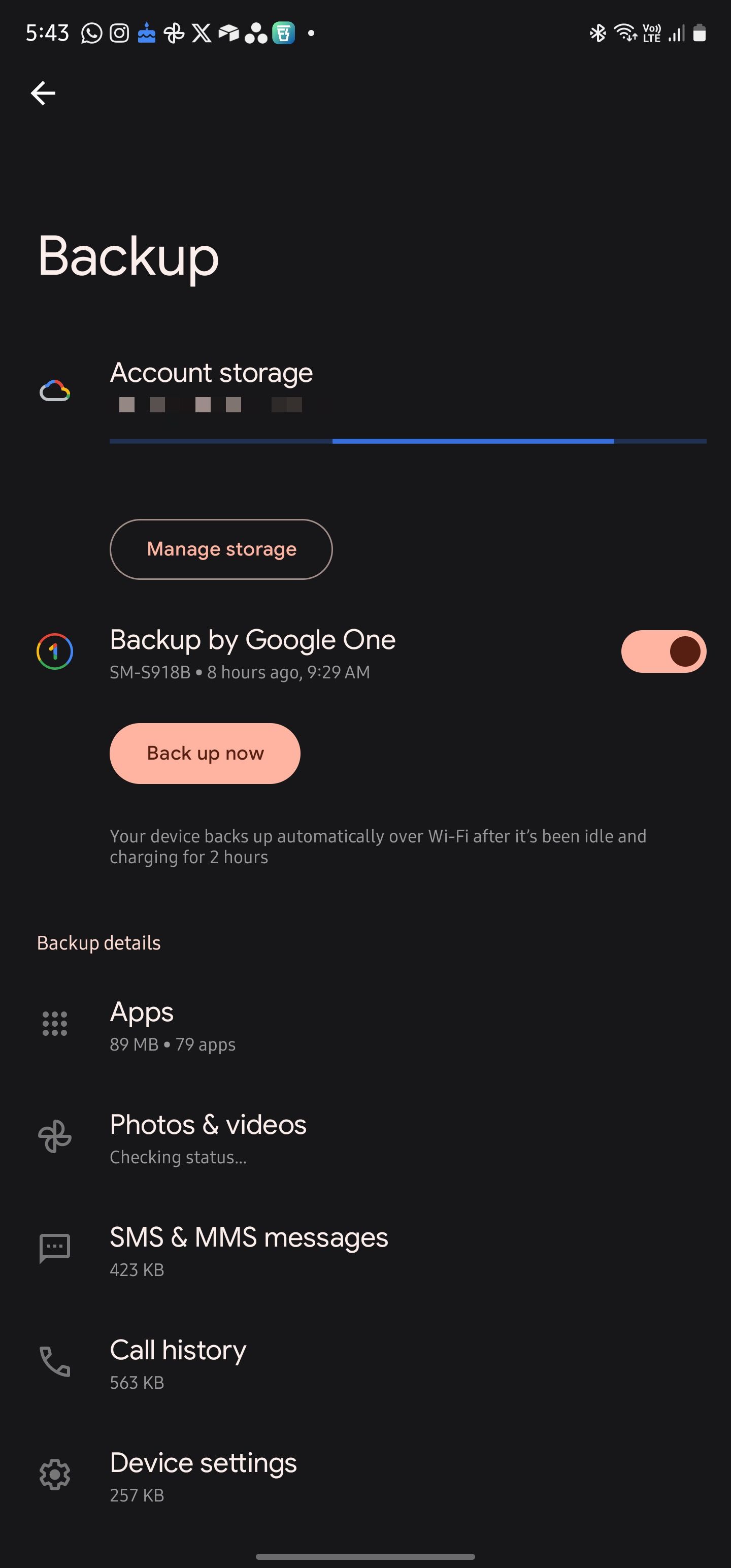
As a part of the Google Drive backup, selected app data, SMS and MMS messages, call history, and Google account data are backed up. For photos and videos, consider using Google Photos.
You can only restore a Google Drive backup during an Android device's setup process. You'll reset it to restore your data.
Always create backups
Irrespective of whether you are selling your current Galaxy phone, always create backups. This way, you'll never lose your data, even if something happens to your phone. And Samsung makes this process easier by offering several methods to back up your data. Consider using Shizuku to batch restore your Android apps after a factory reset, especially since third-party app data is not backed up in any of the solutions mentioned above. Backups make switching to one of the best folding phones easier.

